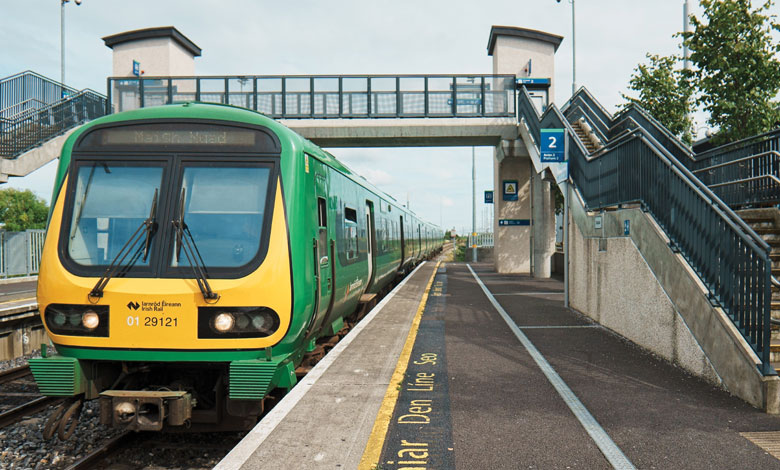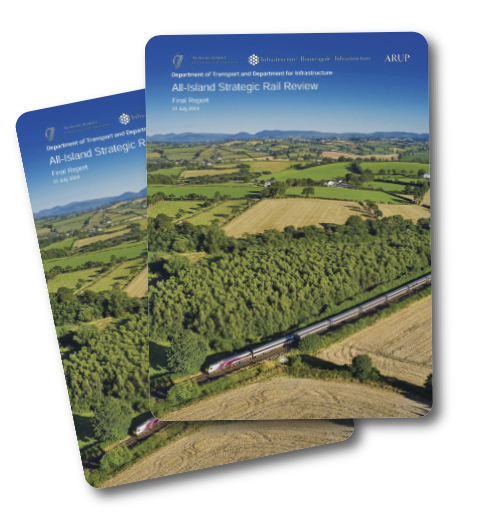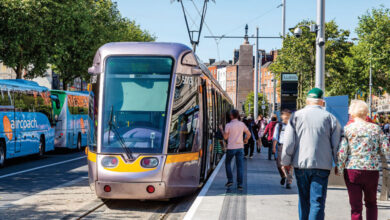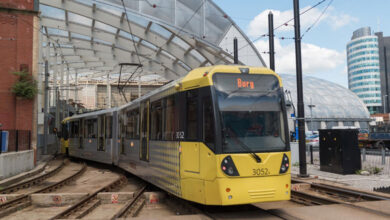All-Island Strategic Rail Review: Progress to date

Almost one year on from the publication of the All-Island Strategic Rail Review, eolas Magazine analyses the progress made recommendations outlined in the document.
To date, the most significant progress made is the development of a projects prioritisation strategy which is now at an advanced stage and planned for publication later in 2025. The Department of Transport (DoT) asserts that this strategy will consider “how best to optimise the sequencing and implementation of the Review recommendations, including both short-term interventions and longer-term projects”. It will inform DoT’s engagement on the ongoing review of the National Development Plan.
DoT says: “It should be noted that individual programmes and projects referred to within the Review will be advanced subject to funding and relevant approvals, as required under the Infrastructure Guidelines in Ireland.”
Due to be delivered by DoT in the South and the Department for Infrastructure (DfI) in the North, it includes 32 recommendations to enhance and expand Ireland’s rail system up to 2050. Recommendations included in the Review aim to achieve the following:
- Additional capacity: Upgrade of much of the single-track rail
network to double-track and four-track in some areas; - Faster services: Reduced journey times with speeds of up to 200 km/h on intercity lines;
- Higher frequency: Hourly services between cities and regional/rural services to operate at least every two hours;
- Decarbonisation: Net zero rail system through overhead electrification of intercity routes and the introduction of new electric trains;
- Greater reach: Increase rail network route length from c. 2,300km to c. 3,000km by reopening former lines and opening new lines
- Wider access: Install new routes in north midlands, west, and north west for 700,000 people to live within 5km of a railway station; and
- More passengers: Triple the number of people using the rail system annually from c. 65 million to c. 180 million by 2050.
Progress
One recommendation for decarbonisation is the procurement of hybrid and electric rolling stock in the medium term as fleets come to the end of their life. In line with this, Iarnród Éireann unveiled the first five-carriage train of the new DART+ Fleet in November 2024 under the DART+ Programme. The train was delivered as part of a framework agreement providing up to 750 electric/battery electric carriages to Iarnród Éireann over a 10-year period.
In November 2024, Translink launched the Better on Board Charter initiative which aims to achieve a “cleaner, greener and healthier Northern Ireland where public transport is the first choice for travel”. It encourages stakeholders from all sectors to endorse the use of public transport through two separate charters: one for Belfast, and the other for Derry. Translink is also currently undertaking a feasibility study for the electrification of Belfast to the border.
In line with the Review’s aim to improve intercity connection between the seven cities on the island of Ireland, an hourly service between Dublin and Belfast became operational in October 2024. DfI says that “procurement has also started on a new, faster, more sustainable Enterprise train fleet for the Dublin-Belfast route”.
Recommendations to improve regional and rural rail access include the extension of the railway into Tyrone, Derry and Donegal, increasing line speeds to at least 120 km/h (75mph), and the reinstatement of the Western Rail Corridor railway between Claremorris and Athenry.
The review also identifies the opportunity to restore the rail line between Derry city and Portadown, County Armagh. Preparatory works began on the line in November 2024 and its delivery would see the introduction of rail stations at Dungannon, Omagh, and Strabane (all in County Tyrone) to the network. Translink is also undertaking feasibility studies for the reopening of the Armagh to Portadown line and the Antrim to Lisburn line, with a link to Belfast international airport.
One of the recommendations for the promotion of sustainable cities is to connect Dublin Airport, Belfast International Airport, and Shannon Airport to the railway line. Iarnród Éireann CEO Jim Meade addressed the links to Shannon Airport in an interview with Limerick’s Live95 in February 2025.
“It is a priority for the region, for Shannon, and for Limerick. It has been talked about since my young days, even as a young manager here in Limerick. But what we have achieved is it is now in a plan. It is now actually in a plan, it is not being talked about anymore,” he said.
“There is a couple of years in getting through planning, identifying the preferred route, getting it costed and getting a railway order to deliver it. But it is now part of that plan.”
The Review outlines four recommendations to improve freight across the island including the strengthening of rail connections to the island’s busiest ports, and development of a network of inland terminals close to major cities on the rail network.
Climate Action Plan 2025, published in April 2025, states that “work is already underway to implement these actions, including the Foynes rail freight line rehabilitation project”. In March 2025, Iarnród Éireann announced that it had completed the laying of 42km of new track on the line.
DfI says: “The recommendations in the All-Island Strategic Rail Review provide an evidence-based framework to inform future investment in the railways across the island of Ireland. However, more work is needed to test the feasibility and affordability of the Review’s recommendations and to secure the necessary funding to take projects forward.”






